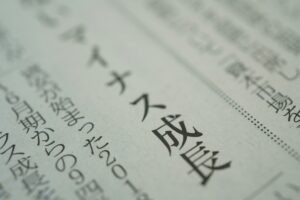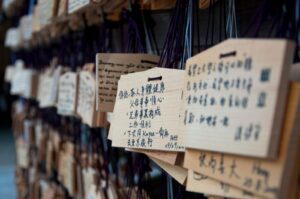Unlocking the Japanese language begins with a foundational step that might seem daunting at first: mastering Hiragana. As the entryway into understanding, speaking, and writing Japanese, Hiragana is not just a set of characters but a gateway to a rich cultural and linguistic heritage. For learners embarking on this journey, the road may be filled with challenges, but the rewards of communicating in one of the world’s most fascinating languages are unparalleled. This essential guide to Hiragana mastery is designed to navigate beginners through the complexities of the Japanese alphabet, offering insights, techniques, and tools to not only learn but also to love Hiragana.
1. The Journey Begins: An Introduction to Hiragana
Hiragana, one of the three scripts used in the Japanese writing system, is a syllabary comprising 46 basic characters. Each character represents a distinct sound, making Hiragana the backbone of Japanese phonetics. Originating from Chinese characters, Hiragana was developed to simplify writing and create a more accessible script for the Japanese language. Its role is pivotal in grammar, as it is used for particles, verb conjugations, and native Japanese words. Embarking on the journey of Hiragana mastery is the first step to unlocking the Japanese language, providing learners with the essential tools to begin reading, writing, and understanding Japanese.
2. Deciphering Hiragana: The Japanese Alphabet
Unlike the Latin alphabet, Hiragana characters do not represent single letters but syllables. This system of writing is called a syllabary. The Hiragana script consists of vowels, consonants combined with vowels, and the singular consonant ‘n.’ The beauty of Hiragana lies in its simplicity and elegance, with each character designed to flow smoothly into the next. Learning Hiragana is akin to acquiring the alphabet in any language – it is the foundation upon which words, sentences, and eventually, conversations are built.
3. Mastering the Basics: Hiragana Chart Explained
The Hiragana chart is a systematic arrangement of the characters, traditionally organized in rows and columns that group the characters by their initial consonant sound, followed by a vowel sound. The chart begins with the five basic vowels: a, i, u, e, o, and proceeds with consonant-vowel combinations such as ka, ki, ku, ke, ko. Familiarity with the chart is crucial for learners, as it not only aids in memorization but also in understanding the phonetic structure of the Japanese language. The chart serves as a roadmap, guiding learners as they navigate through the intricacies of Hiragana.
4. Pronunciation Keys: Nailing the Hiragana Sounds
Pronunciation is the heart of Hiragana mastery. Japanese sounds may seem challenging at first, but they are more consistent and predictable than those in many other languages. Each Hiragana character represents a specific sound, and these sounds rarely vary, regardless of their position in a word. Key to mastering pronunciation is listening to native speakers and practicing aloud. The rhythmic and melodic nature of Japanese makes pronunciation not just a linguistic skill but also a musical one, enhancing the learner’s connection to the language.
5. Writing with Precision: Hiragana Stroke Order
Writing Hiragana characters involves more than just replicating shapes. Each character has a specific stroke order that must be followed, starting from top to bottom and left to right. This stroke order is designed to make the characters look balanced and beautiful when written. Adherence to the correct stroke order also aids in memorization and can significantly improve handwriting readability. Learning the proper stroke order is a meditative practice, encouraging mindfulness and a deeper appreciation for the artistry of Japanese writing.
6. Common Pitfalls in Learning Hiragana and How to Avoid Them
Many learners face challenges in distinguishing similar-looking characters, memorizing the entire syllabary, and mastering pronunciation. A common pitfall is rushing through the learning process without fully assimilating each character. To avoid these traps, learners should take a systematic approach, breaking down the syllabary into manageable sections and using mnemonic devices to aid memorization. Repetition, coupled with active usage of the characters in reading and writing, reinforces memory and comprehension. Patience and persistence are key in overcoming these hurdles.
7. Enhancing Memory: Techniques for Hiragana Recall
Effective memorization techniques for Hiragana include the use of flashcards, mnemonic devices, and spaced repetition systems. Associating characters with images or concepts can make them more memorable. Flashcards, whether physical or digital, are excellent tools for testing recall and reinforcing memory. Spaced repetition software, which schedules reviews based on how well you know each character, can optimize learning efficiency. Incorporating these techniques into daily practice can dramatically improve Hiragana retention.
8. Beyond the Basics: Hiragana Combination Characters
Once the basic characters are mastered, learners can explore Hiragana combination characters, known as "yōon." These are formed by combining a consonant-vowel character with a smaller version of the "ya," "yu," or "yo" characters. These combinations expand the syllabary, allowing for a richer array of sounds and more complex word formations. Understanding and mastering yōon is essential for achieving fluency and deepening one’s knowledge of the Japanese language.
9. Practice Makes Perfect: Effective Hiragana Exercises
Practicing Hiragana involves more than just writing characters repeatedly. Effective exercises include reading practice, writing short sentences, and listening to and repeating Japanese sounds. Engaging with children’s books, songs, and simple texts in Japanese can provide context and make learning more enjoyable. Writing exercises should also focus on using characters in context, rather than isolated practice, to build vocabulary and grammatical understanding simultaneously.
10. Utilizing Technology: Apps for Hiragana Mastery
In the digital age, a plethora of apps and online resources are available to assist in Hiragana mastery. These tools offer interactive lessons, games, and quizzes to make learning engaging and flexible. Some popular apps include Anki, a flashcard app with spaced repetition, and Duolingo, which offers bite-sized lessons on Japanese including Hiragana. Utilizing these technological aids can complement traditional learning methods and provide learners with a multifaceted approach to mastering Hiragana.
11. From Hiragana to Fluency: Building Your Japanese Vocabulary
Mastering Hiragana is the first step toward fluency in Japanese. With a solid understanding of Hiragana, learners can begin to build their vocabulary, learn Kanji (Chinese characters used in Japanese), and grasp basic grammar concepts. Expanding vocabulary involves both memorization and practical application, through reading, writing, and conversation practice. As vocabulary grows, so does confidence in using the language, paving the way for advanced study and eventual fluency.
12. Embracing Japanese Culture: Hiragana in Daily Life
Hiragana is not just a set of characters but a living part of Japanese culture. As learners progress, they can start to recognize Hiragana in everyday contexts, from menus and street signs to manga and traditional poetry. Engaging with Japanese culture, whether through cuisine, literature, or media, enriches the learning experience and provides a deeper understanding of the context in which Hiragana is used. Ultimately, mastering Hiragana opens up a world of cultural discovery and linguistic achievement.
The journey to Hiragana mastery is both challenging and deeply rewarding, providing learners with the keys to unlock the Japanese language and its rich cultural heritage. By understanding the basics, practicing diligently, and embracing Japanese culture, learners can build a strong foundation in Japanese that will serve them throughout their language learning journey. Whether you are a beginner or looking to refresh your skills, this guide offers the essential steps to Hiragana mastery, paving the way for fluency and beyond. With patience, persistence, and the right resources, anyone can conquer the beautiful challenge of learning Hiragana.



